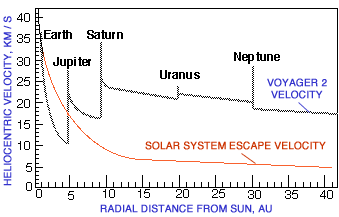 Anything we throw up in the air will fall back to the ground. This is because of the downward pull of gravity, which is causes the downward acceleration of 9.81 meters per second squared. For an object to leave the surface of the earth, without falling back due to gravity, it must possess a speed of at least 25,000 miles per hour. This is the escape velocity from the planet.
Anything we throw up in the air will fall back to the ground. This is because of the downward pull of gravity, which is causes the downward acceleration of 9.81 meters per second squared. For an object to leave the surface of the earth, without falling back due to gravity, it must possess a speed of at least 25,000 miles per hour. This is the escape velocity from the planet.
As an object travels up and increases its elevation, the pull of gravity gets weaker. However, it needs an initial velocity to gain enough kinetic energy (KE). This KE (0.5 times mass and square of velocity), will sustain the flight until it is out of gravity?s influence. That velocity is about 25000 mph or 7 mps.
However, it is a common misconception that an object must have this speed instantly to leave earth. Escape velocities also vary depending on the current elevation of the object. Any object can leave the planet at lower speeds?but with sustained thrust. Space shuttles, for example, do not achieve the escape velocity during take-off. They continuously defy gravity by burning tons of fuel. When they achieve a certain altitude, the influence of gravity will be minimal.
Explaining Escape Velocity
